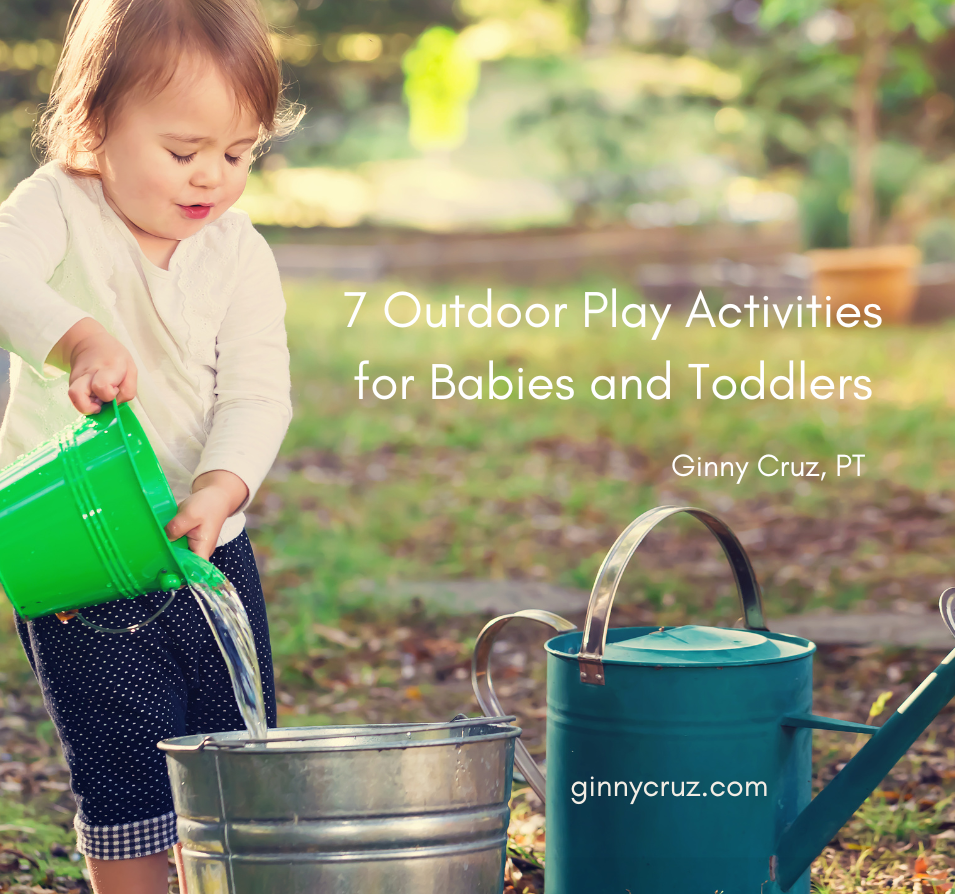7 Outdoor Play Activities for Babies and Toddlers
If your toddler climbs on the furniture or dumps out your sock drawers, it is time to save your sanity. Take your child outdoors to play. Babies and toddlers crave sensory-rich play experiences. Since most sensory play is messy, it is best done outdoors.
Want to give it a try and reclaim your peace?
Try these ideas:
7 Outdoor Play Activities
- Playing in the sprinkler. Your youngster does not need a pool to enjoy playing outside in the water. All you need is a simple sprinkler turned down to a low setting. Your baby can splash and giggle, and your toddler can leap over or run away from the cold spray.
- Drawing with sidewalk chalk. Thick chalk sticks are perfect for small hands. Have an area where your child can scribble to their heart’s content. You could draw shapes for them to color or let them create their own.
- Swinging. Young children often love to swing. The gentle back-and-forth motion calms children and is an excellent way for your little one to unwind before returning inside.
- Climbing. A toddler-sized outdoor play gym is ideal. Nowadays, most public parks have toddler-sized equipment. Let your baby scramble up the steps, crawl through the tunnels, and climb (with assistance) on the rock walls. Climbing builds strong muscles and improves self-confidence.
- Digging and Dumping. Babies and toddlers love to fill and dump things out of containers. Water and sand are fantastic for container play. These simple activities offer endless fun and build the hand strength necessary for writing and dressing.
- Tossing and Kicking. Roll a ball back and forth while you sit together on a blanket or in the grass. Once your child can walk, offer larger balls for them to kick or throw. Small balls (baseball-sized) are fine, but larger balls, like beach balls, provide new challenges. Beach balls are ideal because they cannot hurt your baby and they move slowly, making them easier to catch.
- Taking walks. Babies love taking walks. Pushing your child in the stroller provides a gentle forward motion that calms children. Short walks to explore the yard are also great. Talk to your little one about the things you see, hear, and smell along the journey.
How to Make It Happen
While all moms are busy, it is possible to play outdoors by scheduling fifteen – to thirty-minute blocks in the morning and after the afternoon nap. For example, after breakfast, go outside to play in the sandbox or swing in the cool morning air. Since your child is messy from breakfast and playing in the sand, strip them down and play in the kiddie pool. Here, they can splash, dip, and dump water or giggle without making a mess.
Afterward, dry them off with a warm, fuzzy towel, and then go inside for some quiet play, like looking at a picture book, putting on some soft music, building blocks, or pulling plastic bowls out of your bottom cabinets while you get lunch ready.
The Importance of Outdoor Play
During their early years, babies and toddlers are like sponges, absorbing everything around them. Outdoor play offers innumerable learning opportunities. Water becomes a magical element. Mud is a mesmerizing texture. Running, climbing, and swinging are soothing physical activities. Exploring nature’s wonders, like fuzzy moss or colorful butterflies, is an unparalleled educational experience.
When parents understand that messy outdoor play helps their child meet developmental milestones and prepare for preschool, it is easier for them to make the time for it. Share on XEvery day contains competing demands, but a regular schedule of outdoor play activities makes for a happier child and a calmer mom.
What outdoor play activities does your child enjoy?
Get your Milestone Tracker here.
(Photo: Canva Stock)
Disclaimer: All information presented is general education and is not intended as specific prescriptions for your child. If you have concerns about any aspect of your baby’s development, talk with your doctor. If your child receives any intervention or therapy, this information is not intended to be used without their knowledge.

